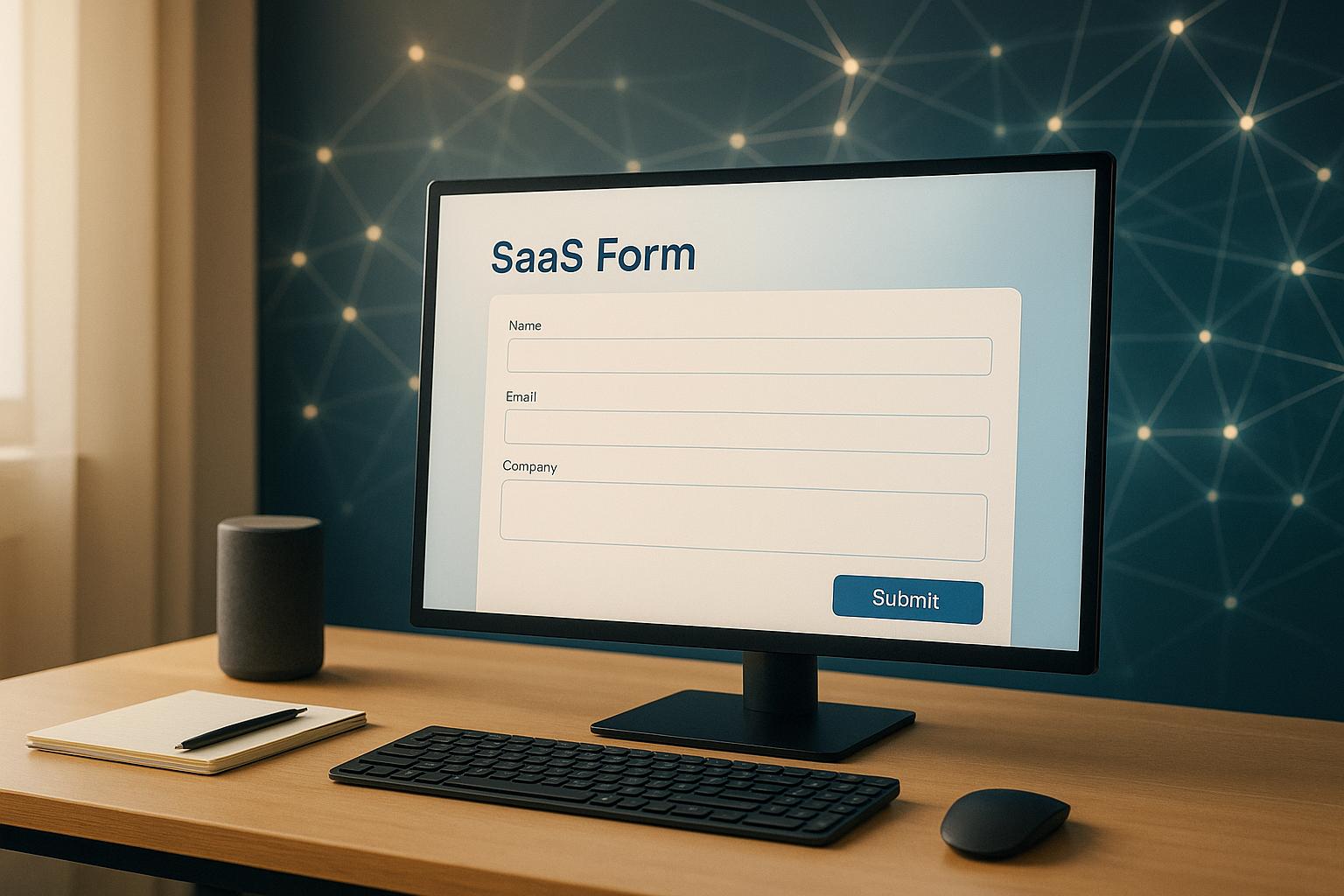Consent's Role in Customer Data Insights

Collecting customer data without proper consent can harm your business. It risks fines, damages customer trust, and reduces data quality. Consent management ensures compliance with privacy laws like GDPR and CCPA while improving relationships with customers. Here’s what you need to know:
- Consent Basics: Customers must give clear, informed permission for data collection. They should know how their data is used and have the option to update or withdraw consent.
- Legal Risks: Non-compliance with GDPR can result in fines up to €20M or 4% of global revenue. CCPA violations can cost $7,500 per incident.
- Business Benefits: Ethical consent builds trust - 89% of consumers prefer brands with transparent data practices. It also leads to better data accuracy and stronger customer insights.
Key Differences Between GDPR and CCPA:
- GDPR requires explicit opt-in consent, while CCPA operates on an opt-out model.
- Both demand clear communication and easy ways for users to manage their preferences.
Managing consent effectively involves tools like consent management platforms and no-code forms to simplify the process. It’s not just about compliance - it’s about building trust and gathering reliable data for better decisions.
Getting started with GDPR compliance: Consent
GDPR vs. CCPA: Key Differences
For U.S. businesses serving customers worldwide, navigating compliance with both GDPR and CCPA can be tricky. Each regulation has its own approach to consent, making it essential to understand their differences to manage consent effectively.
GDPR Consent Requirements
The General Data Protection Regulation (GDPR) enforces a strict opt-in consent model. This means businesses must get explicit permission from individuals before collecting or processing their personal data. Consent under GDPR must meet specific conditions: it has to be freely given, specific, informed, and unambiguous. For example, pre-checked boxes, hidden terms, or unclear language won’t cut it.
This approach requires active participation from users. Companies must provide clear details about how the data will be used, and users should be able to withdraw their consent just as easily as they gave it.
How CCPA's Opt-Out Model Works
The California Consumer Privacy Act (CCPA), on the other hand, operates on an opt-out model. Here, businesses can collect personal data unless consumers actively take steps to stop it. CCPA mandates that companies provide a visible "Do Not Sell My Personal Information" link, allowing users to opt out. Companies must process these requests promptly. Non-compliance can result in penalties of up to $7,500 per violation, and consumers can seek damages of up to $750 per incident.
While the opt-out model allows businesses to collect data more quickly, it shifts the burden onto consumers to protect their privacy. As customers become more aware of their rights, businesses may face an increase in opt-out requests.
Common Compliance Problems
Meeting the requirements of both GDPR and CCPA is no small feat. Businesses often struggle with tracking data flows and managing cross-border data transfers due to limited resources and differing regulatory standards.
Other challenges include interpreting complex legal terminology, maintaining accurate data inventories, and ensuring strong data security measures. Compliance costs add up quickly - businesses in the UK alone spend over £38.4 billion annually on modern compliance efforts. On top of that, human errors and inadequate employee training can lead to missteps, as staff may not fully understand data privacy rules or cybersecurity practices.
The global nature of data privacy regulations complicates things further. With more than 120 countries enforcing data privacy laws that have been in place for at least two years, businesses must juggle GDPR, CCPA, and additional frameworks, each with its own consent requirements. This patchwork of regulations highlights the need for efficient, unified consent management solutions.
The Role of Unified Consent Management
To tackle these challenges, businesses are turning to integrated tools. For example, Reform’s form builder offers features like conditional routing and real-time analytics, making it easier to handle different consent workflows while keeping detailed compliance records. By streamlining consent practices, companies can not only meet regulatory requirements but also improve data quality and gain deeper customer insights.
Common Consent Management Problems
Making Consent Clear and Simple
Many organizations struggle to communicate their data collection and usage practices in a straightforward way. Instead, they rely on consent forms packed with legal jargon, leaving users confused and unsure about what they’re agreeing to. This lack of clarity can erode trust and may even lead to legal complications. Simplifying consent forms is crucial - not just for meeting legal standards but also for strengthening customer relationships. When businesses prioritize transparency, they encourage informed decisions, improve data quality, and build stronger connections with their audience.
sbb-itb-5f36581
How to Manage Consent Effectively
Tackling the challenges of consent management requires practical solutions that address compliance issues and user trust. Here’s how you can streamline the process.
Using Consent Management Platforms
Consent management platforms make it easier to handle user permissions across websites, apps, and email campaigns. They simplify tracking and documentation, reducing the risk of compliance issues. These platforms monitor consent statuses, update user preferences, and automatically log consents along with their durations. By automating these tasks, they minimize the need for manual oversight.
Audit trails are another key feature - they provide detailed records that can be invaluable during regulatory reviews. Plus, automated re-consent campaigns help keep your database updated as consent periods expire or new regulations come into play.
Creating Consent Forms with No-Code Tools
No-code tools allow you to create branded, user-friendly consent forms without needing coding skills. Start with a clear and direct consent question, giving users full control over their data. These tools often include features like skip logic, which can end the session immediately if a user denies consent, and mandatory acknowledgment fields to ensure users actively engage with your terms.
When designing these forms, explain why you’re collecting the data, how it will be used, how long it will be retained, and provide contact details for questions or concerns. You can include this information directly on the form or link to your privacy policy. For more formal scenarios, e-signature fields can collect legally binding consent, complete with signatures from both the user and a witness. To further ensure accuracy, advanced spam filters and email validation tools help verify that the data comes from real users.
Keeping Policies Updated and Opt-Outs Easy
Regular updates to your privacy policies are essential to ensure they reflect your current data practices. Setting a reminder to review and amend these policies quarterly can help you stay on track.
Make it simple for users to withdraw consent. A single-step opt-out process is ideal, but you can also create a preference center using multi-step forms with conditional logic. This allows users to adjust specific permissions rather than opting out entirely. Monitoring abandoned submissions can reveal friction points in your consent process, giving you the chance to improve completion rates while maintaining compliance. These steps not only support legal requirements but also build trust with your audience.
How Consent Affects Customer Data and Analytics
The way consent influences data analytics is a balancing act that requires careful attention. Building on earlier discussions about consent management, let’s dive into how it directly impacts the outcomes of data analytics. When customers have control over their data permissions, it affects not only the volume of data but also its overall quality.
Consent Impact on Data Quality
Fragmented consent can seriously disrupt the accuracy of your data. If some users grant full permissions while others limit or completely revoke access, the resulting datasets can become incomplete, skewing your analytics. This lack of consistency makes precise customer segmentation much harder to achieve.
Predictive models, such as those used in machine learning, thrive on comprehensive and up-to-date data. Missing consent from key customer groups can create blind spots, leading to flawed assumptions about customer behaviors, churn rates, or even their lifetime value. Without a full picture, your predictions are at risk of being off the mark.
Another challenge is that the quality of consent diminishes over time. Expired or revoked permissions can make older data less reliable for generating current insights. This erosion of data quality impacts predictive models and reduces the effectiveness of marketing strategies, leading to decisions based on incomplete or outdated information.
Staying Compliant While Using Data for Marketing
Marketing teams must find ways to work effectively within the boundaries of consent. Following compliant practices isn’t just about avoiding legal trouble - it also ensures that the insights you gather are actionable. One way to address this is through consent renewal programs. By periodically reconnecting with customers to remind them of their consent choices and offering them the chance to update preferences, businesses can keep permissions current and aligned with user expectations.
Adapting segmentation strategies is another key approach. Instead of casting a wide net, focusing on high-quality, consented segments can lead to better engagement and a stronger return on investment. These are the customers who’ve actively chosen to share their data, making them more likely to respond positively to your campaigns.
Additionally, clear data retention policies are critical. Establishing structured routines for deleting or anonymizing data when consent is revoked - or when it’s no longer needed - helps maintain compliance and keeps datasets clean. This systematic approach minimizes the risk of accidental non-compliance and ensures that your data remains legally sound.
Opt-In vs. Opt-Out: Pros and Cons
Finding the right balance between opt-in and opt-out models is essential for managing data quality while maximizing analytic reach.
| Aspect | Opt-In Model | Opt-Out Model |
|---|---|---|
| Data Volume | Smaller initial datasets with higher engagement | Larger initial datasets with potential quality issues |
| Compliance Risk | Lower risk due to explicit consent | Higher risk; organizations must prove legitimate interest |
| Insight Accuracy | More precise insights for consented groups | Broader coverage but with less certainty about consent |
| Marketing ROI | Higher conversion rates from engaged users | Larger reach but possibly lower engagement rates |
| Customer Trust | Builds trust through transparency | May erode trust if preferences feel ignored |
| Implementation Complexity | Requires robust consent systems | Needs sophisticated processes to manage opt-out requests |
Opt-in models might result in smaller datasets, but the data you collect will likely be more reliable and come from users who are genuinely interested in engaging with your brand. This approach often leads to stronger insights about your most valuable customer segments. However, it may limit your ability to understand broader market trends.
On the other hand, opt-out models can give you a more extensive dataset upfront. But they come with challenges, like ensuring every opt-out request is honored and managing the uncertainty around passive users who may not actively consent. While this approach can work for basic analytics, it’s less effective for detailed behavioral tracking. The risks - both financial and reputational - of mishandling consent often outweigh the short-term benefits of gathering more data through aggressive opt-out practices.
For businesses designing consent forms, tools like Reform can simplify the process. These tools help create user-friendly, legally compliant forms that encourage voluntary participation. Features like multi-step forms with conditional logic allow you to clearly explain how data will be used, giving users more control over their permissions. This not only improves consent rates but also enhances the quality of the data you collect.
Building Trust Through Proper Consent
Trust is the foundation of any solid customer relationship. When businesses prioritize clear and transparent consent practices, they not only encourage better engagement but also ensure accurate data sharing. This approach fosters loyalty, which in turn makes customers more likely to stick around.
Managing consent properly isn’t just about compliance - it’s also about protecting your brand. Non-compliance with data protection regulations can lead to hefty fines, while privacy breaches can tarnish your reputation. And let’s face it, a damaged reputation makes acquiring new customers more expensive and retaining existing ones a lot harder.
Key Points for Businesses
Getting consent right does more than meet legal standards - it builds trust that lasts.
Put transparency first. At every point where you collect data, be upfront about what you’re asking for, why you need it, and how you’ll use it. Skip the legalese and stick to plain, easy-to-understand language. This not only fulfills regulatory requirements but also shows respect for your customers’ ability to make informed decisions.
Offer detailed consent options. Instead of a blanket "accept all" button, give customers the ability to choose what they’re comfortable with. Break permissions into categories like essential functions, marketing, and analytics. When people feel they have control, they’re more likely to agree to what genuinely matters to them.
Use tech to simplify consent collection. Tools like Reform can help you create clear, user-friendly consent forms. Features like conditional logic allow for personalized and compliant interfaces that make the process smoother for everyone.
Set clear rules for data retention and deletion. Be upfront about how long you’ll keep customer data and make it easy for them to withdraw consent or request deletion. Regularly auditing your data storage ensures you’re not holding on to information longer than necessary.
Make consent renewal customer-friendly. Instead of treating renewals as a dull compliance task, frame them as a chance for customers to update their preferences. This can strengthen your relationship by showing that you care about keeping their experience relevant and tailored.
Balance data collection with customer benefits. Customers are more willing to share their information when they see clear value in return. Whether it’s personalized recommendations, exclusive deals, or better service, make sure the benefits are obvious and worthwhile.
FAQs
What’s the difference between GDPR’s opt-in model and CCPA’s opt-out model, and how do they affect businesses?
The GDPR opt-in model requires businesses to gain explicit and active consent from users before collecting any personal data. While this approach might result in fewer users agreeing to share their information, it often leads to stronger user engagement and builds trust. On the flip side, it can drive up compliance costs since businesses need to implement detailed consent management systems.
On the other hand, the CCPA opt-out model operates under the assumption that users have consented to data collection unless they take action to opt out. This method enables businesses to gather more data but demands a high level of transparency. It also requires companies to make the opt-out process straightforward and accessible for users.
These two models shape how businesses approach data collection. GDPR compliance emphasizes proactive measures to secure consent, while CCPA compliance focuses on offering simple, user-friendly ways to opt out. Both frameworks play a key role in shaping consumer trust and ensuring adherence to regulatory standards.
How can businesses manage customer consent to comply with regulations while keeping data quality high?
To handle customer consent responsibly and stay compliant, businesses should prioritize clear and honest communication. This means explaining the purpose of data collection, how the information will be used, and offering straightforward options for customers to manage their preferences. When consent options are easy to understand, it not only fosters trust but also encourages customers to engage willingly.
It's equally important to regularly review and update privacy policies and consent procedures to keep up with changing regulations. Using tools like no-code form builders can streamline the process of gathering consent, while also keeping data organized, secure, and readily available for audits. By focusing on transparency and giving users control over their data, businesses can meet compliance requirements while maintaining the quality of their customer information.
How can businesses build and maintain customer trust by being transparent about consent?
To earn and keep customer trust, businesses need to focus on honest and straightforward communication about how they handle customer data. Use plain, easy-to-understand language to explain consent policies, and make it simple for customers to access and manage their preferences.
It's also important to design consent practices that are easy to navigate. Offer clear options for opting in or out, and regularly review your compliance processes to ensure everything is up to standard. By respecting customer choices and showing a genuine commitment to their privacy, businesses can build trust that lasts.
Related posts
Get new content delivered straight to your inbox

The Response
Updates on the Reform platform, insights on optimizing conversion rates, and tips to craft forms that convert.
Drive real results with form optimizations
Tested across hundreds of experiments, our strategies deliver a 215% lift in qualified leads for B2B and SaaS companies.





